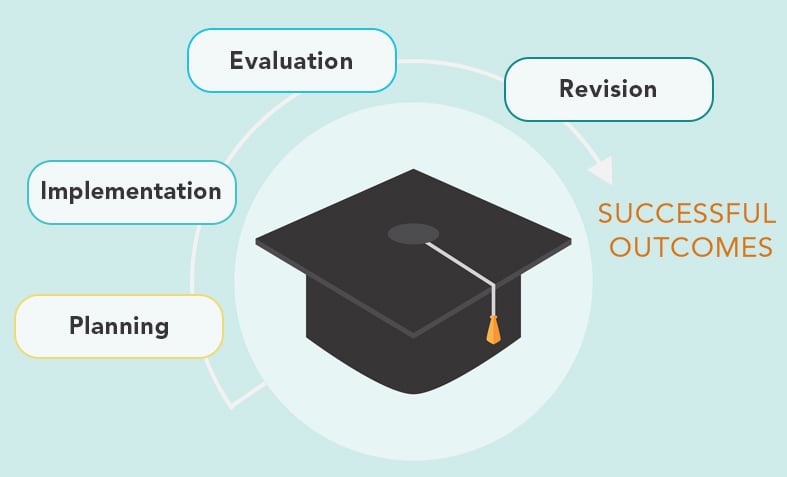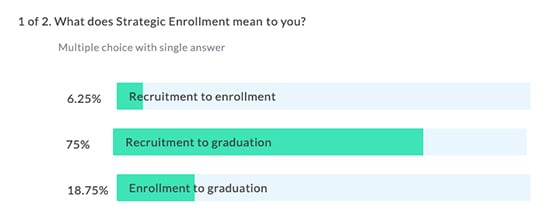What does Advanced Analytics have to do with Student Success?

Traci Roble
It’s not surprising that enrollment isn't the only problem for colleges and universities.
Student success, inclusive of graduating on time with manageable debt and achieving positive post-graduate outcomes, is more and more a focal point of higher education institutions as enrollments decline.
With that being said, nearly 25 percent of students at four-year institutions do not have a degree after six years, supporting these concerns within higher education.
That’s scary.
Add to that the challenges in recruiting students, amplified by the shrinking pool of high school students, and it’s an even scarier environment.
With many colleges and universities shifting resources to impact students that are already enrolled, advanced analytics are a necessary tool to make timely and strategic improvements.
Some institutions are even using advanced analytics to identify students who are most likely to persist before they enroll.
Going Back to Basics
Strategic enrollment professionals are well-versed in the challenges facing higher education. They are on the front line every day.
And in times of constant change, it’s important to think about the core objectives of your job in strategic enrollment management.
What exactly is strategic enrollment management? It is not an organizational structure, nor enhanced admissions and marketing office, nor a quick fix.
It is a key concept and process in higher education that fulfills both the institutional mission and students’ educational goals.
Strategic enrollment management creates a highly interactive team that utilizes established principles of planning, implementation, evaluation, and revision to ensure constant success in fulfilling educational commitments to students.

I recently polled a group of enrollment professionals about the definition of strategic enrollment. Hopefully, no surprises here. The majority view strategic enrollment from recruitment to graduation, aligning with a key capability in advanced analytics today.

When do you start to think about student success and evaluate students? I also polled the same group of enrollment professionals on this topic. The majority evaluate student success before a student commits to attending their institution.

That’s Othot’s philosophy as well.
Why Advanced Analytics Matters to Student Success
“If universities want to survive into the century while maintaining relevant to the business world and the global market, they must utilize innovative methods that engage students from the time of admission through graduation.”
As I mentioned earlier, colleges and universities are under extreme pressure to increase retention and graduation rates. The tools to evaluate and gauge student success need to work for a school and help it achieve its goals.
That’s where advanced analytics is of increasing importance. It brings some certainty to an uncertain environment. Advanced analytics are no longer a nice to have, they are a must have for student success.
Advanced analytics informs decision-making and optimizes the relationship between an individual student and a college or university. When you get those actionable insights, you can direct your resources to the right places and students at the right time.
Understanding the Aggregate and the Individual
At Othot, we approach student success and retention holistically and engage with our partners to consider student success before an individual student steps onto campus.
Our models identify students who are most likely to enroll, persist, and graduate. They also determine the top impacts that increase or decrease an individual student’s predicted student success score. That’s information that can be passed to academic advisors.
They can, in turn, use it to guide a student as s/he decides what classes to take, what outside of the classroom activities to participate in, and which early intervention tactics to use if they see a change in a student’s behavior.
Advanced analytics also provides a lens to understand what’s going on with your total student population. You can evaluate several outcomes, from retention to persistence to graduation, and gain a deeper understanding about your enrollment classes.
The Student Success Journey
At Othot, we know predictive and prescriptive analytics can improve student success strategies and support the “strategic” in SEM.
Advanced analytics provide insights that can be used to make changes to strategy, and a following post will demonstrate how analytics can help with student success.
Lastly, I think it is important to point out that analytics don’t replace strategies. They support and enhance existing approaches so you can make informed decisions about your students.

Traci Roble



